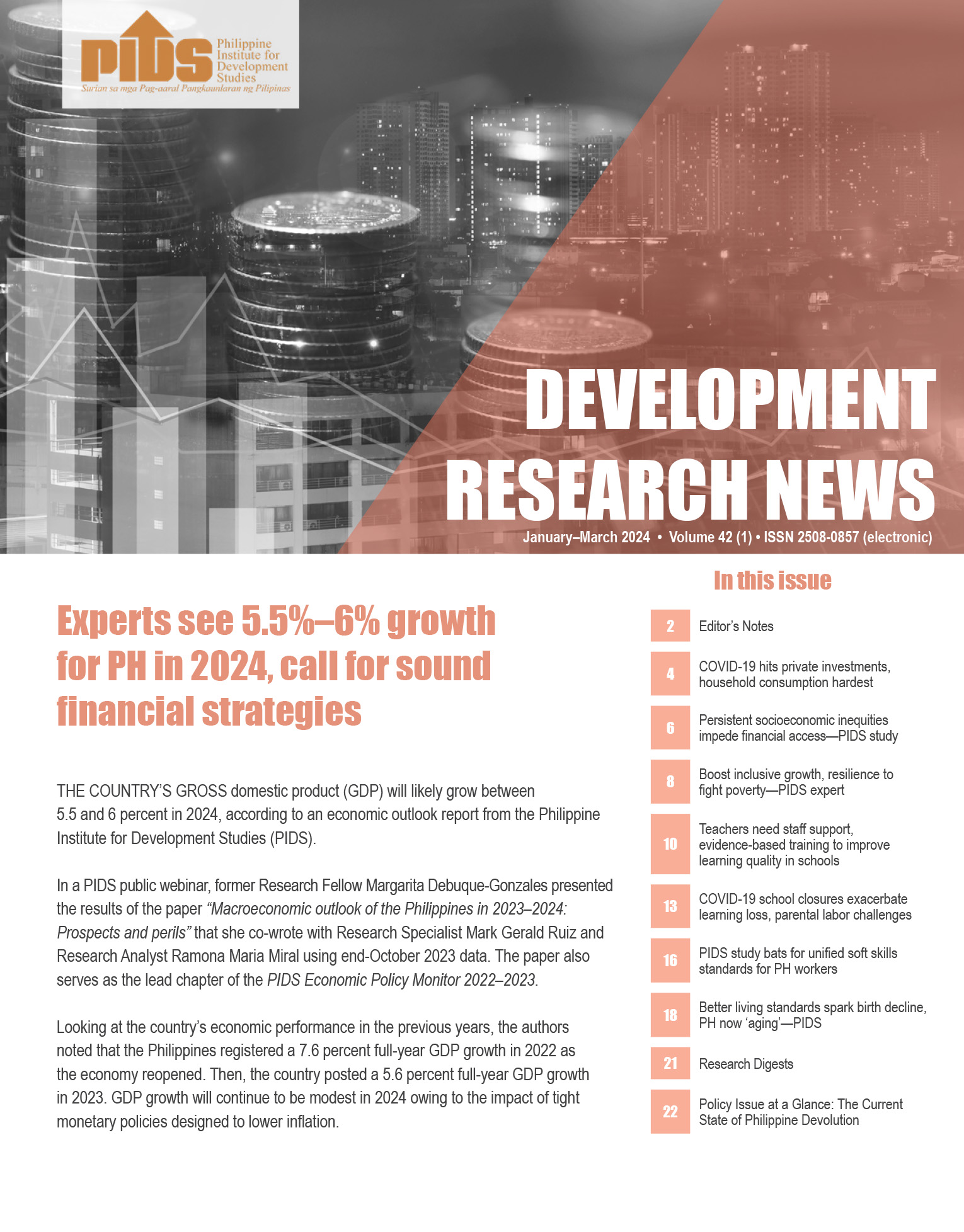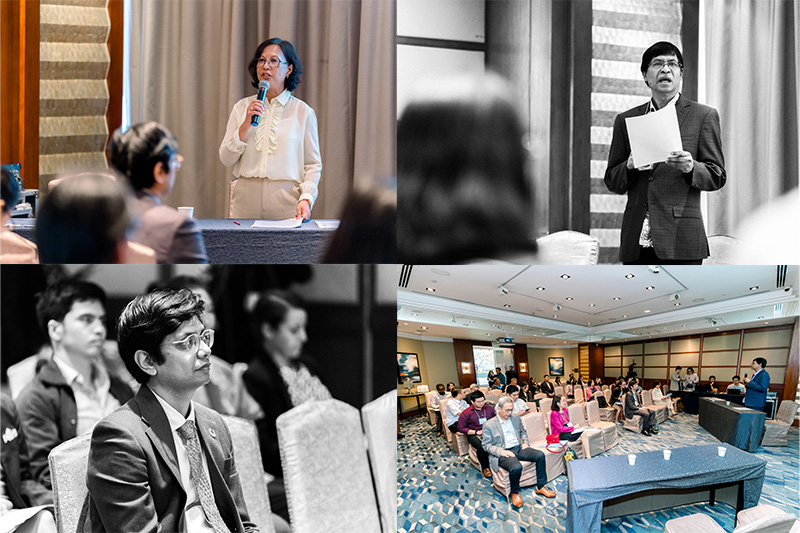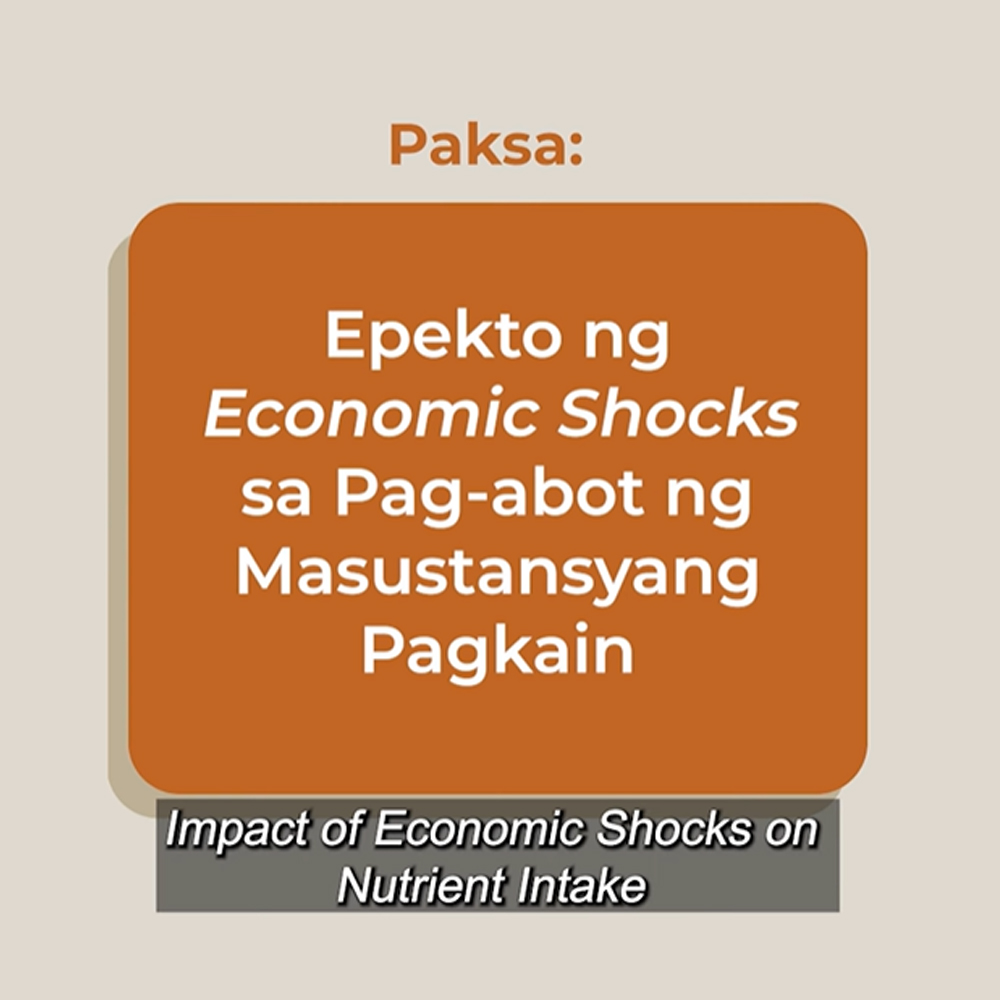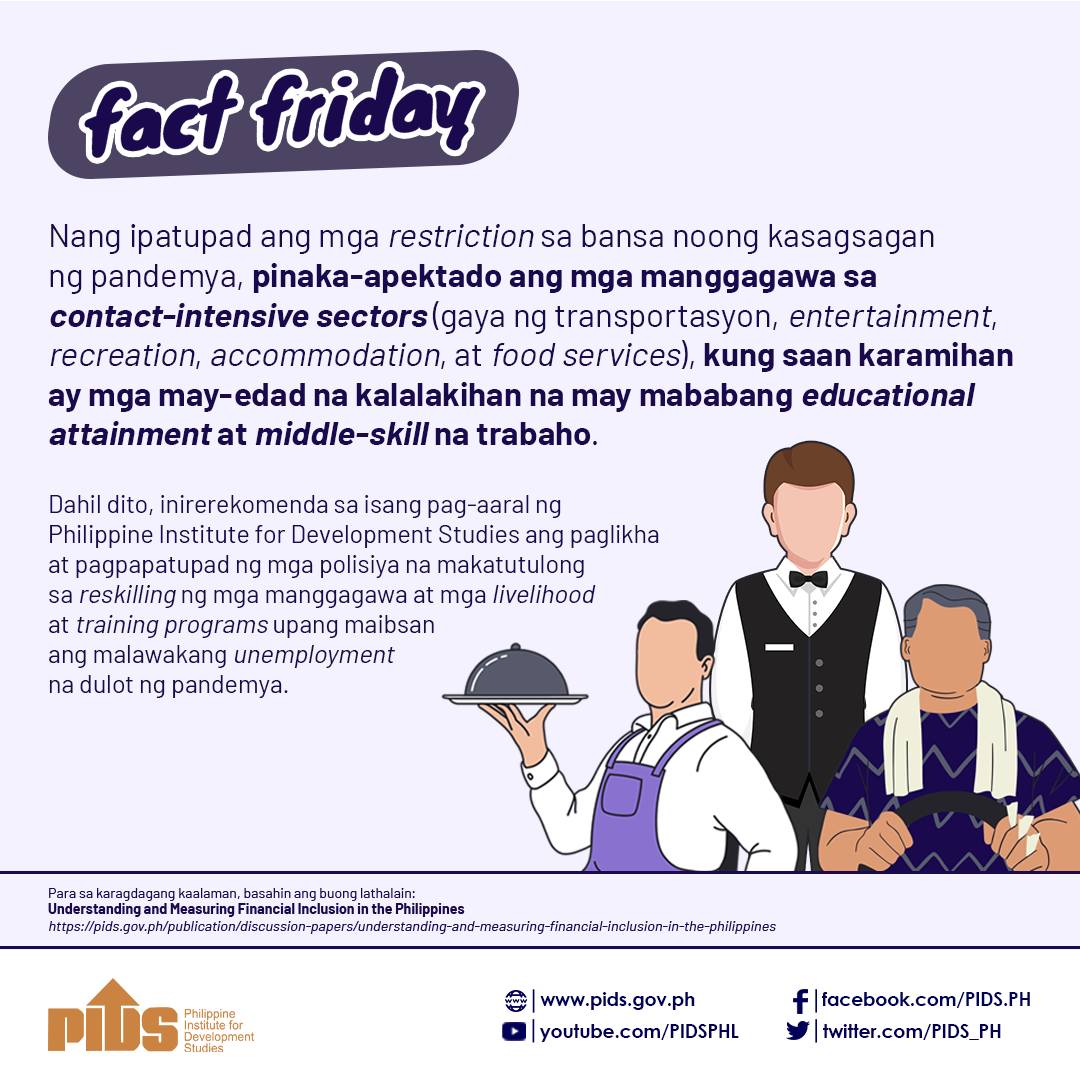Officials in the Rodrigo Duterte administration, particularly spokesman Harry Roque, have been blaming the public for the spike in coronavirus cases in the country, claiming that many have flouted the curbs on movement.
At the same time, they sought to hijack the narrative of the outbreak, claiming the government had acted promptly to prevent the spread of the virulent pathogen causing a highly contagious respiratory disease.
Roque has repeatedly patted the backs of those in the Duterte government for imposing an enhanced community quarantine ahead of other countries in Southeast Asia, and rolling out the country’s largest-ever social program to help the most vulnerable sector in society.
Truth is, the government was passing the blame on the people and absolving themselves for mistakes and slow response to the public health crisis the country is now facing. This pandemic is the toughest test of the president’s leadership since his election in 2016.
Reports about a mysterious disease that caused dozens of deaths in China began to appear in the international media late last year. Later it was identified as a novel coronavirus as Chinese authorities imposed a lockdown in Wuhan City in the central province of Hubei.
The first case in the Philippines surfaced on January 20 when two tourists from Wuhan, who traveled to Cebu City and Dumaguete City in the central Philippines, showed flu-like symptoms. It took more than week before the Department of Health confirmed that the couple were infected with coronavirus after their specimens were sent to a laboratory in Melbourne, Australia for tests.
Unfortunately, the male tourist died from severe pneumonia. His partner got well and returned to China days later. A third Chinese tourist was also detected to be infected, got well, and returned home.
For about a month from February 5, the Philippines did not report any coronavirus case, a lull that Health Secretary Francisco Duque III claimed was a demonstration of the country’s preparedness in the face of a pandemic.
At that time, coronavirus cases have started breaking out in South Korea, Japan and Western Europe, particularly in Italy, which soon exceeded China in terms of the highest number of infections.
Duque even claimed the Philippines to be a model for virus containment, but he spoke too soon. By the first week of March, local coronavirus cases started to appear, first in a shopping mall in Greenhills after an elderly man contracted the virus in a packed prayer room.
Then came two people who had travel histories to Japan, South Korea and the United States. By the second week of March, the health department had confirmed the spread of the virus through community transmission.
The president initially imposed a community quarantine in the capital region on March 15, almost two months after the first case was detected. Two days later, a Luzon-wide lock down was declared, closing the country’s borders and banning citizens from traveling as tourists and preventing tourists from entering the country.
In a Senate hearing earlier this year, Duque rejected calls for the country to stop Chinese tourists from arriving, even as some countries, including Russia, Taiwan, Vietnam and Japan had closed their borders.
The health secretary was more concerned with diplomatic relations with China than protecting the country from a potential public health crisis. But he cannot be blamed totally because the president and his trusted aide, Sen. Christopher Lawrence “Bong” Go, resisted the ban on Chinese visitors, describing the measure as xenophohic.
Duque also discouraged the wearing of face masks and rejected calls tor the government to conduct mass testing because the country lacked medical equipment and supplies.
Health officials made excuses that there was no scientific proof that mass testing would be effective in stopping the spread of the disease and that the masks did not provide adequate protection.
It was only after Carlito Galvez, a retired army general, was appointed chief implementer of government’s national action plan that both Duque’s protocols were reversed and both mass testing and mandatory wearing of face masks were recommended.
Galvez said mass testing and aggressive contact tracing would be the “game changer” in halting the spread of the virus as he unveiled the DITR – detect, isolate-treat-reintegrate — strategy to defeat the pandemic.
The strategy was patterned after the military’s 30-year counterinsurgency model – “Clear, Consolidate, Hold and Develop” – to eliminate Maoist-led rebels’ influence in rural villages in the country.
It was like catching the fish by draining the pond of water. In the same manner, the government is now trying to identify infected persons, placing them in quarantine areas to monitor and manage their symptoms and get them back on their feet again.
The government is still in the first phase of detecting infected persons by mass screening, increasing testing capacity to about 8,000 to 10,000 a day in the next three months.
At the same time, the national task force has been preparing large quarantine areas, converting sports and convention centers into isolation areas where infected persons will be treated.
However, the government is still struggling with the detection phase as it had only screened about 55,000 as of April 20 due to the shortage of testing kits and limited number of accredited testing centers nationwide.
Six weeks after the enhanced community quarantine, more than 64 percent of the tests were done at the Research Institute for Tropical Medicine (RITM) and less than 20 percent were done outside Metro Manila. The rest were done by private and public hospitals in the capital.
It appeared that many people still needed to be tested outside the capital, where there could be a high rate of infections. Examples are Cebu and Dumaguete cities, where the first cases of coronavirus were detected in January.
On Monday, there was an added pressure as the RITM was forced to reduce its testing capacity, after 40 of its staff were found positive for the virus.
The government does not have adequate testing kits and will procure 2 million rapid testing kits to expand screening and determine the extent of infection in the country.
Galvez said there could be more than 100,000 people who were asymptomatic but exposed to the virus and needed to be tested, apart from the health department’s backlog of 12,000 people with suspected and probable Covid-19 cases.
At the same time, they sought to hijack the narrative of the outbreak, claiming the government had acted promptly to prevent the spread of the virulent pathogen causing a highly contagious respiratory disease.
Roque has repeatedly patted the backs of those in the Duterte government for imposing an enhanced community quarantine ahead of other countries in Southeast Asia, and rolling out the country’s largest-ever social program to help the most vulnerable sector in society.
Truth is, the government was passing the blame on the people and absolving themselves for mistakes and slow response to the public health crisis the country is now facing. This pandemic is the toughest test of the president’s leadership since his election in 2016.
Reports about a mysterious disease that caused dozens of deaths in China began to appear in the international media late last year. Later it was identified as a novel coronavirus as Chinese authorities imposed a lockdown in Wuhan City in the central province of Hubei.
The first case in the Philippines surfaced on January 20 when two tourists from Wuhan, who traveled to Cebu City and Dumaguete City in the central Philippines, showed flu-like symptoms. It took more than week before the Department of Health confirmed that the couple were infected with coronavirus after their specimens were sent to a laboratory in Melbourne, Australia for tests.
Unfortunately, the male tourist died from severe pneumonia. His partner got well and returned to China days later. A third Chinese tourist was also detected to be infected, got well, and returned home.
For about a month from February 5, the Philippines did not report any coronavirus case, a lull that Health Secretary Francisco Duque III claimed was a demonstration of the country’s preparedness in the face of a pandemic.
At that time, coronavirus cases have started breaking out in South Korea, Japan and Western Europe, particularly in Italy, which soon exceeded China in terms of the highest number of infections.
Duque even claimed the Philippines to be a model for virus containment, but he spoke too soon. By the first week of March, local coronavirus cases started to appear, first in a shopping mall in Greenhills after an elderly man contracted the virus in a packed prayer room.
Then came two people who had travel histories to Japan, South Korea and the United States. By the second week of March, the health department had confirmed the spread of the virus through community transmission.
The president initially imposed a community quarantine in the capital region on March 15, almost two months after the first case was detected. Two days later, a Luzon-wide lock down was declared, closing the country’s borders and banning citizens from traveling as tourists and preventing tourists from entering the country.
In a Senate hearing earlier this year, Duque rejected calls for the country to stop Chinese tourists from arriving, even as some countries, including Russia, Taiwan, Vietnam and Japan had closed their borders.
The health secretary was more concerned with diplomatic relations with China than protecting the country from a potential public health crisis. But he cannot be blamed totally because the president and his trusted aide, Sen. Christopher Lawrence “Bong” Go, resisted the ban on Chinese visitors, describing the measure as xenophohic.
Duque also discouraged the wearing of face masks and rejected calls tor the government to conduct mass testing because the country lacked medical equipment and supplies.
Health officials made excuses that there was no scientific proof that mass testing would be effective in stopping the spread of the disease and that the masks did not provide adequate protection.
It was only after Carlito Galvez, a retired army general, was appointed chief implementer of government’s national action plan that both Duque’s protocols were reversed and both mass testing and mandatory wearing of face masks were recommended.
Galvez said mass testing and aggressive contact tracing would be the “game changer” in halting the spread of the virus as he unveiled the DITR – detect, isolate-treat-reintegrate — strategy to defeat the pandemic.
The strategy was patterned after the military’s 30-year counterinsurgency model – “Clear, Consolidate, Hold and Develop” – to eliminate Maoist-led rebels’ influence in rural villages in the country.
It was like catching the fish by draining the pond of water. In the same manner, the government is now trying to identify infected persons, placing them in quarantine areas to monitor and manage their symptoms and get them back on their feet again.
The government is still in the first phase of detecting infected persons by mass screening, increasing testing capacity to about 8,000 to 10,000 a day in the next three months.
At the same time, the national task force has been preparing large quarantine areas, converting sports and convention centers into isolation areas where infected persons will be treated.
However, the government is still struggling with the detection phase as it had only screened about 55,000 as of April 20 due to the shortage of testing kits and limited number of accredited testing centers nationwide.
Six weeks after the enhanced community quarantine, more than 64 percent of the tests were done at the Research Institute for Tropical Medicine (RITM) and less than 20 percent were done outside Metro Manila. The rest were done by private and public hospitals in the capital.
It appeared that many people still needed to be tested outside the capital, where there could be a high rate of infections. Examples are Cebu and Dumaguete cities, where the first cases of coronavirus were detected in January.
On Monday, there was an added pressure as the RITM was forced to reduce its testing capacity, after 40 of its staff were found positive for the virus.
The government does not have adequate testing kits and will procure 2 million rapid testing kits to expand screening and determine the extent of infection in the country.
Galvez said there could be more than 100,000 people who were asymptomatic but exposed to the virus and needed to be tested, apart from the health department’s backlog of 12,000 people with suspected and probable Covid-19 cases.












